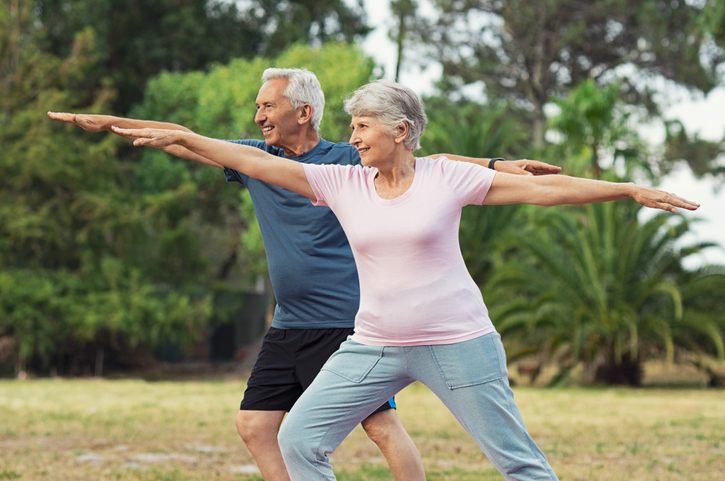
Near falls – a momentary loss of balance where corrective action prevented a fall – provide a telling signal for midlife and older adults, serving as a significant precursor to further falls. While this had been an area sadly lacking in research scrutiny, Nicky Baker’s studies into disruptions to postural control – the subject of her PhD Thesis “Postural sway in near fallers: Effects of fatigue and distraction” – aim to identify predictive factors in near fallers.
Having worked with Caring Futures Institute’s Professor Sue Gordon from 2016 in Inspiring Health, Nicky had been investigating the early signs of ageing among 40-75-year-olds. “One of the common impairments was postural control, with near falls being reported regularly,” says Nicky. “I wanted to see what caused near falls and if there were predictive elements to near falls.”
During midlife, people are at risk of covert functional decline that is predominantly related to the physical function factors of muscle mass, strength and balance. Being able to control balance is exhibited as changes in postural sway and function, which can be affected by distraction and fatigue.
For Nicky’s PhD studies – supervised by Professor Gordon, with Professor Anthony Maeder and Associate Professor Niranjan Bidargaddi as adjunct supervisors – preparatory work identified clinical balance tests to discriminate near fallers from non-fallers, based on previous research with a similar community-based midlife population. Near fallers were 2-3 times more likely to fail single leg stance, lunge and five tandem steps forwards than non-fallers.

A longitudinal study measured balance outcomes and postural sway using tests in healthy, midlife, community dwelling, non-faller or near faller adults. Participants also completed a daily near falls/falls diary for three months, and were surprised that findings showed their balance being worse under fatigued and distracted conditions.
The defining difference between the near fallers and fallers was the near fallers’ ability to recover balance after a slip, trip or misstep. The outcomes show that better physical function, particularly core stability, reduces the risk of near falls.
Core stability screening alongside physical activity measures would indicate who may be at risk of not recovering from a slip or trip incident.
“From a clinical perspective, it is essential to encourage daily physical activity,” says Nicky. “Thirty minutes of moderate exercise each day attains the target activity. Physical activity can be incidental or purposeful, prescribed as an adjunct to therapy or as a primary target therapy.”
Specific exercises to build muscle power will maximise the speed of muscle contraction required to recover balance if a slip, trip or misstep occurs. For instance, tip toes, squats and lunges done at different depths and speeds generate power in lower limbs for righting reactions. Also, balance and strengthening activities that require both eccentric and concentric muscle control are important to permit the ankle and hip anticipatory postural adjustments.
Adequate muscle length is an inherent component of eccentric control. Doing stretches, with particular attention to calf length, will permit adequate range of movement for balance recovery. Power training should be complemented by training reactive balance skills, with hip flexion/extension and step recovery patterns on unstable surfaces, along with creating and maintaining a stable core.
Health and exercise staff engaged with midlife adults in health promotion, wellness provision, work fitness screening and therapy settings can easily incorporate such physical activity approaches. “These are not difficult to refine for individual circumstances and do not necessarily require great financial outlay to the client,” says Nicky.
A strong and supportive network of stakeholders supported this research, including the Australian Research Council providing funding to the Digital Enhanced Living Hub that provided the PhD scholarship, local government partners in the Cities of Salisbury, Onkaparinga, Charles Sturt and Holdfast Bay, and industry partner ACH Group helping with recruitment and providing suitable venues.
This research has the opportunity to influence policy that promotes healthy ageing, and Nicky suggests future research can focus on providing specific interventions for power training, reactive balance mechanisms and core stability in non-fallers to evaluate if these are the key variables for preventing falls.
She also suggests more intensive near-fall investigation in workplaces. “The occupational hazards of slips and trips are well documented, but the intrinsic capacity of the midlife working population to avoid occupational slips and trips is poorly understood,” says Nicky. “Providing insight of near-miss risk mitigation from both environmental and personnel perspectives would inform better work health and safety research, practice and policy.”

